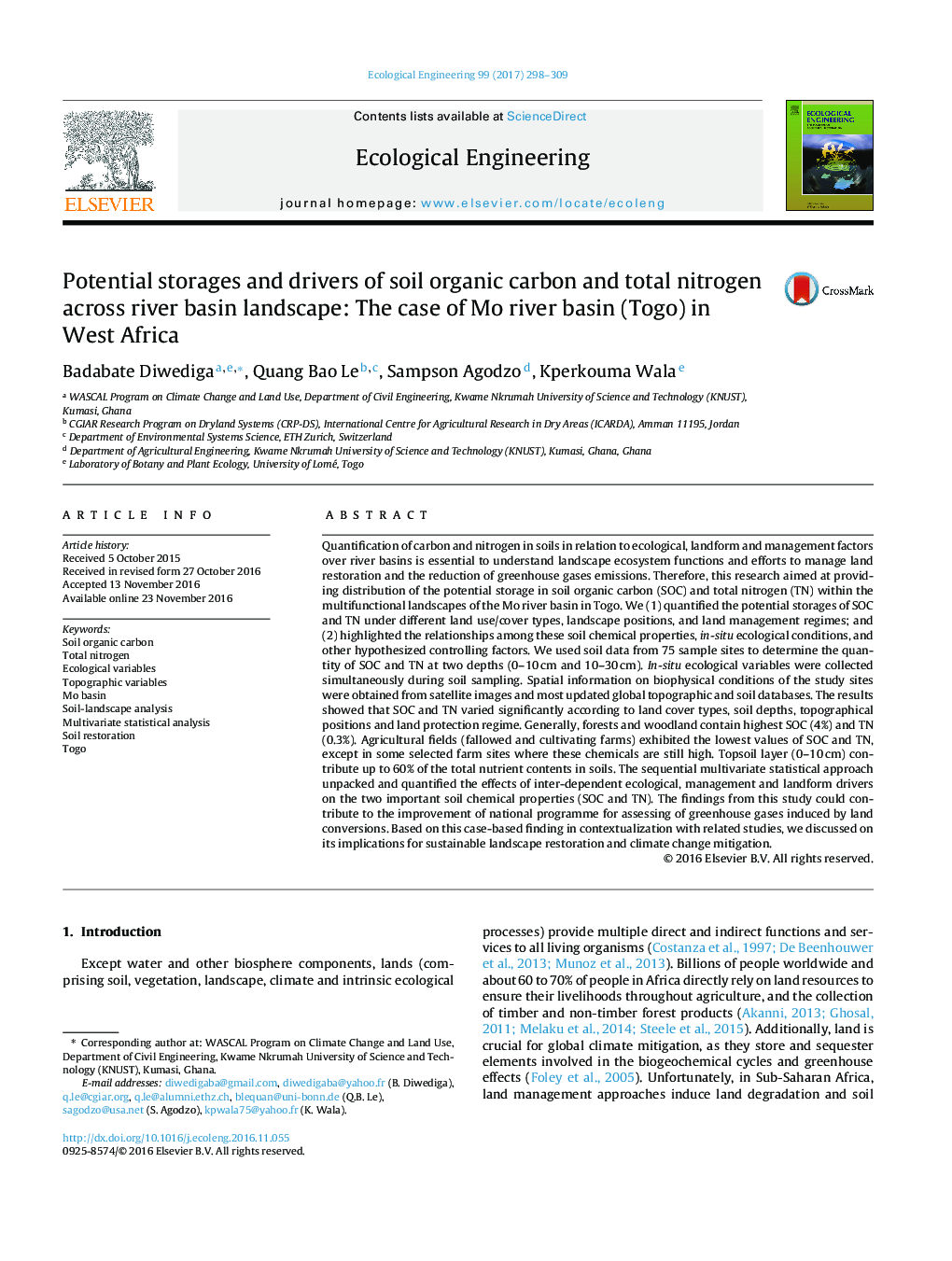| Article ID | Journal | Published Year | Pages | File Type |
|---|---|---|---|---|
| 5743997 | Ecological Engineering | 2017 | 12 Pages |
â¢Contents in SOC and TN were compared in different landscape facies.â¢Multivariate statistics were used to analyse the soil-landscape interactions.â¢Inter-dependence of ecology, management and landform on SOC and TN was quantified.â¢We discussed the implications of soil-landscape interactions for soil restoration.
Quantification of carbon and nitrogen in soils in relation to ecological, landform and management factors over river basins is essential to understand landscape ecosystem functions and efforts to manage land restoration and the reduction of greenhouse gases emissions. Therefore, this research aimed at providing distribution of the potential storage in soil organic carbon (SOC) and total nitrogen (TN) within the multifunctional landscapes of the Mo river basin in Togo. We (1) quantified the potential storages of SOC and TN under different land use/cover types, landscape positions, and land management regimes; and (2) highlighted the relationships among these soil chemical properties, in-situ ecological conditions, and other hypothesized controlling factors. We used soil data from 75 sample sites to determine the quantity of SOC and TN at two depths (0-10Â cm and 10-30Â cm). In-situ ecological variables were collected simultaneously during soil sampling. Spatial information on biophysical conditions of the study sites were obtained from satellite images and most updated global topographic and soil databases. The results showed that SOC and TN varied significantly according to land cover types, soil depths, topographical positions and land protection regime. Generally, forests and woodland contain highest SOC (4%) and TN (0.3%). Agricultural fields (fallowed and cultivating farms) exhibited the lowest values of SOC and TN, except in some selected farm sites where these chemicals are still high. Topsoil layer (0-10Â cm) contribute up to 60% of the total nutrient contents in soils. The sequential multivariate statistical approach unpacked and quantified the effects of inter-dependent ecological, management and landform drivers on the two important soil chemical properties (SOC and TN). The findings from this study could contribute to the improvement of national programme for assessing of greenhouse gases induced by land conversions. Based on this case-based finding in contextualization with related studies, we discussed on its implications for sustainable landscape restoration and climate change mitigation.
